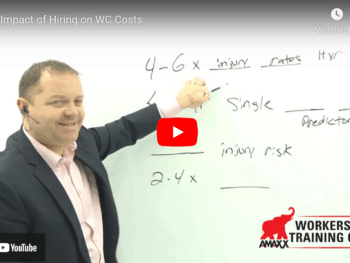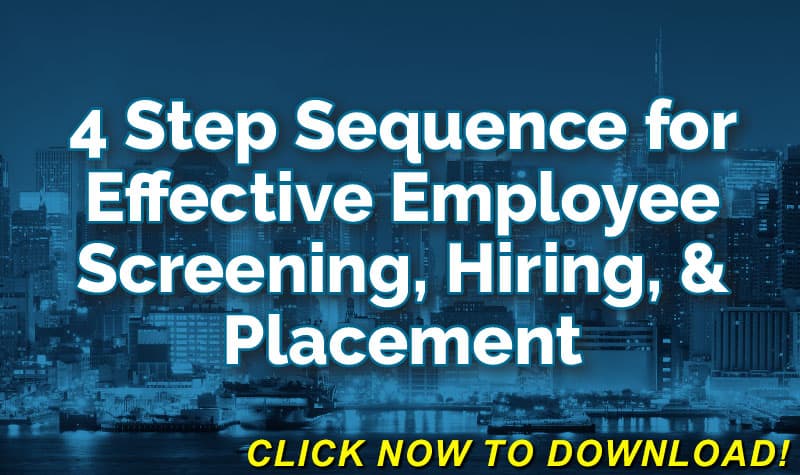If you were the producer of a Broadway show, would your hire a 300-pound ballerina? The idea seems absurd, but most employers shy away from hiring and retaining obese employees. (Obesity discrimination is illegal in Michigan, the District of Columbia, San Francisco, and Santa Cruz, CA). Obesity is not a disability that falls under the Americans with Disabilities Act (ADA) unless is has a proven physiological cause. We do not advocate obesity discrimination, but feel you should be aware that the more obese people you hire and employ, the higher the cost of your workers compensation insurance will be. This is also true in life insurance, one must fall into the appropriate body weight range to qualify for reasonably priced life insurance. Sad but true. And there may be ample justification for such increase in rates.
There are many ways to define obesity. To most people, a “fat person” is someone who weights 50 or 100 pounds more than they do. Medically speaking, a person with a body mass index – BMI (a weight-to-height ratio, calculated by dividing one's weight in kilograms by the square of one's height in meters) of 18.5 to 24.9 is considered to be of normal weight, 25 to 29.9 is considered to be overweight, with 30 and above is considered obese. The doctor once told my husband he was obese which was very surprising because I don't view him as obese — a beer tummy maybe, but certainly not obese to my way of thinking.
In a often-cited Duke University study based on 100 full-time employees with a body mass index of 40, the impact of obesity on the cost of workers compensation is tremendous. Statistics show the impact on workers compensation cost of obese employees who are injured on the job including:
1. Claims: Obese employees have twice as many workers compensation claims (11.65 claims vs. 5.8 claims for non-obese employees.)
2. Lost days from work: Obese employees lose 13 times more work days for their injury (183.63 days vs 14.19 days).
3. Medical cost: Obese employees medical cost is seven times higher ($51,901 vs. $7,503).
4. Indemnity Cost: Obese employees indemnity cost is 11 times higher ($59,178 vs. $5,396).
Another study by researchers at John Hopkins found similar results with a direct correlation between the number of injuries and the amount of obesity, with the odds of injury at work increasing with the waistline. The more obese the employee, the greater the odds the employee would be hurt on the job.
With nearly two-thirds of all American adults either overweight or obese, obesity is now being divided into subgroups with their own definitions including:
1. Overweight – 1 to 29 pounds above normal
2. Obese – 30 to 59 pounds overweight
3. Severely obese – 60 to 99 pounds overweight
4. Morbidly obese – at least 100 pounds overweight
5. Super obese – 200 or more pounds overweight
Per the Center for Disease Control and Prevention, in 2007 about one-fourth (26 percent) of all employees were in the obese or a higher category. It is projected that by the year 2020, 40 percent of men and 43 percent of women will be classified as obese or higher. When you include the overweight people with the obese, by 2020 it is predicted that 70 percent of all employees will be overweight, with the number of overweight people continuing to grow (no pun intended).
What does this mean for workers compensation? Well, any one who has been involved with or who has handled their share of workers compensation claims know the injuries most common to obese employees involve their back, lower extremities (knees and ankles primarily), wrist (carpal tunnel claims and women with obesity “go hand-in-hand”) and hands. Obese employees generally hurt their back when trying to lift heavy weights or lift any weight improperly, and the obese employees hurt their backs, knees and ankles more severely when they slip and fall. Due to their obesity, obese employees have a significantly higher percentage of musculoskeletal injuries than non-obese employees.
The additional strain placed on the employee's musculoskeletal system by the additional weight is only one factor that delays the employee's recovery from an injury. Obese employee's often have other comorbidity problems besides their weight that delays their recovery from injury. Other medical issues among obese employee's interfering with their recovery include hypertension, heart disease and diabetes. open-ended According to the National Counsel on Compensation Insurance, these comorbidity issues can increase the cost of a work comp claim by an astounding 30 times.
As an employer, there are some steps you can take to reduce the cost of workers compensation related to obesity. The following are some approaches employers have taken to deal with this issue:
1. Health insurance premium discounts for employees with a BMI of 18 to 25.
2. A weight-reduction program offered through your human resources department.
3. Encourage physical activity at work whether it is taking the steps instead of the elevator or parking at the far end of the parking lot.
4. Use weight loss seminars from Weight Watchers or Jenny Craig.
5. On-site or off site fitness centers with free membership or reduced price membership.
6. A fitness program that includes healthy eating, health improvement seminars, exercise classes, and company sponsored athletic teams.
7. Use of the company intranet to post weight loss guides, cooking light suggestions, and any topic on good health.
8. A recognition program for employees who meet a weight-loss goal.
Encouraging your employees to be healthy pays off in lower workers compensation cost and provides for a healthier, happier work force. Insurance companies – yes – the very same ones selling life insurance and workers compensation need to get in line to promote wellness, health and fitness just as much as any other employer. My daughter worked for an insurance company and the supervisor had a candy dish on her desks, ice-cream sundae Wednesday, birthday cakes often and pot luck Friday once a month. Ice Cream Sundae Wednesday? Ya think everyone was bringing in Frozen Yogurt?
Author Rebecca Shafer, JD, President of Amaxx Risks Solutions, Inc. is a national expert in the field of workers compensation. She is a writer, speaker, and website publisher. Her expertise is working with employers to reduce workers compensation costs, and her clients include airlines, healthcare, printing/publishing, pharmaceuticals, retail, hospitality, and manufacturing. See www.LowerWC.com for more information. Contact:RShafer@ReduceYourWorkersComp.com .
Our WC Manual: http://corner.advisen.com/partners_wctoolkit_book.html
WORK COMP CALCULATOR: http://www.LowerWC.com/calculator.php
SUBSCRIBE: Workers Comp Resource Center Newsletter
Do not use this information without independent verification. All state laws vary. You should consult with your insurance broker or agent about workers comp issues.
©2011 Amaxx Risk Solutions, Inc. All rights reserved under International Copyright Law. If you would like permission to reprint this material, contact Info@ReduceYourWorkersComp.com.












